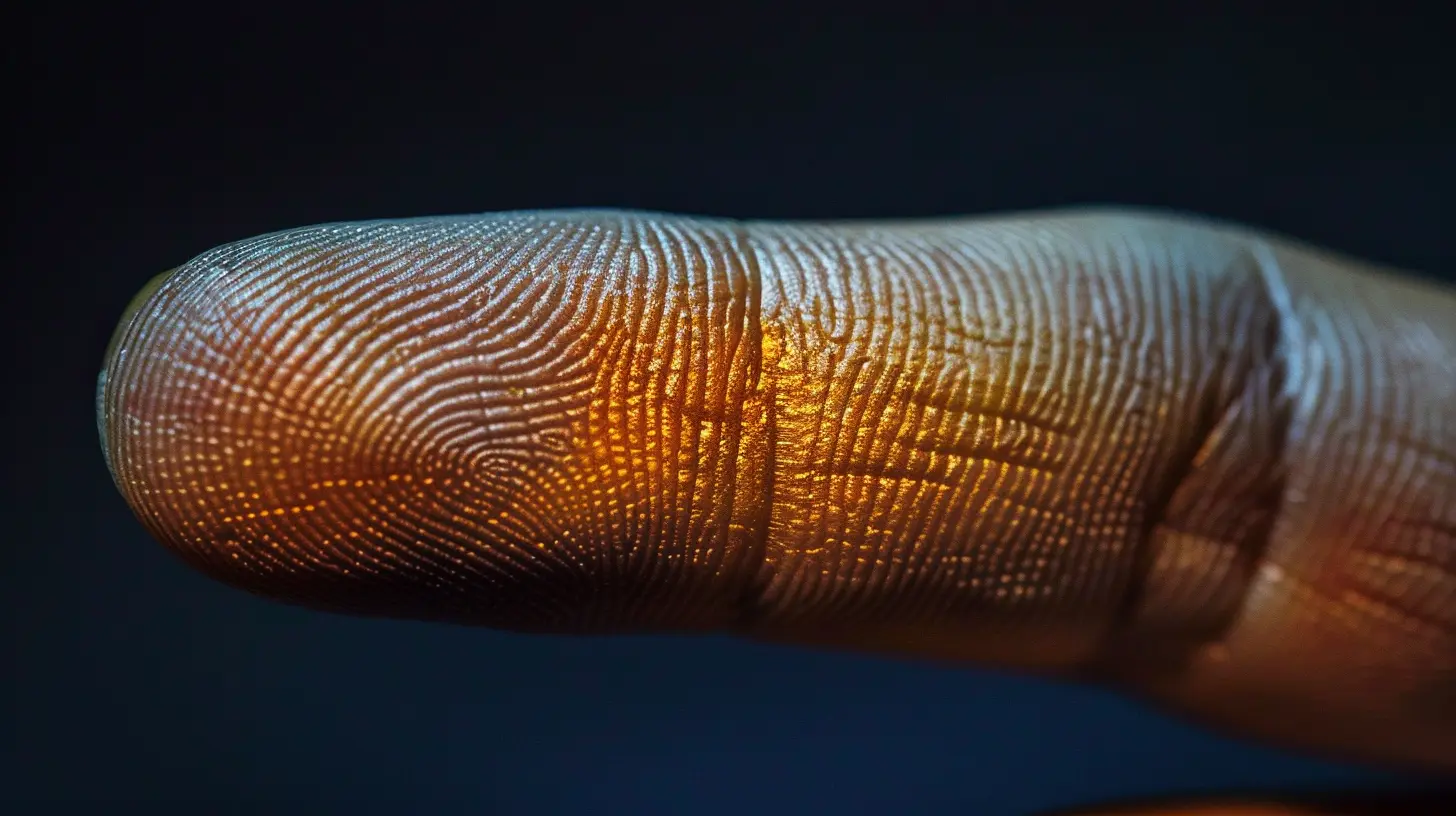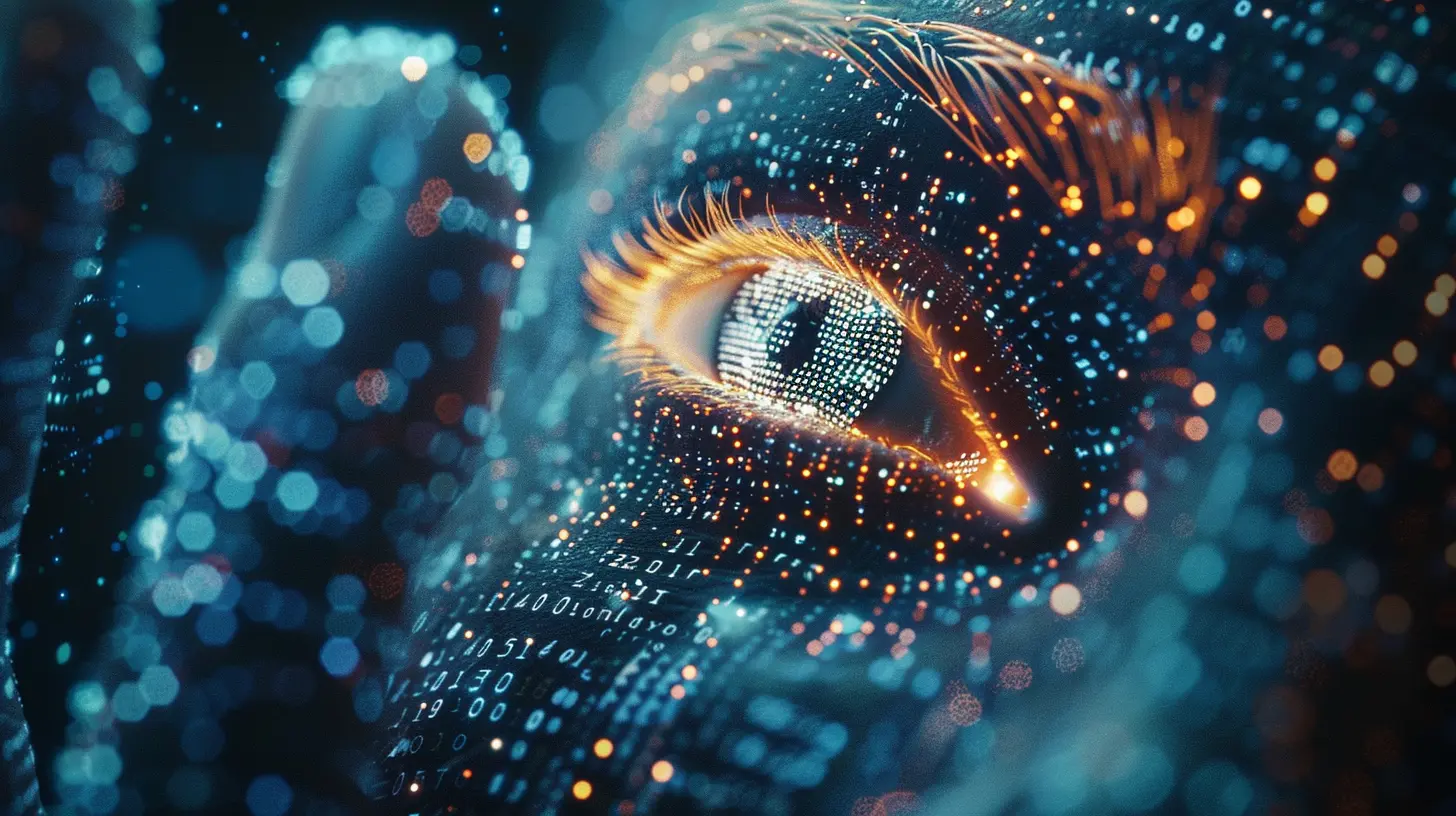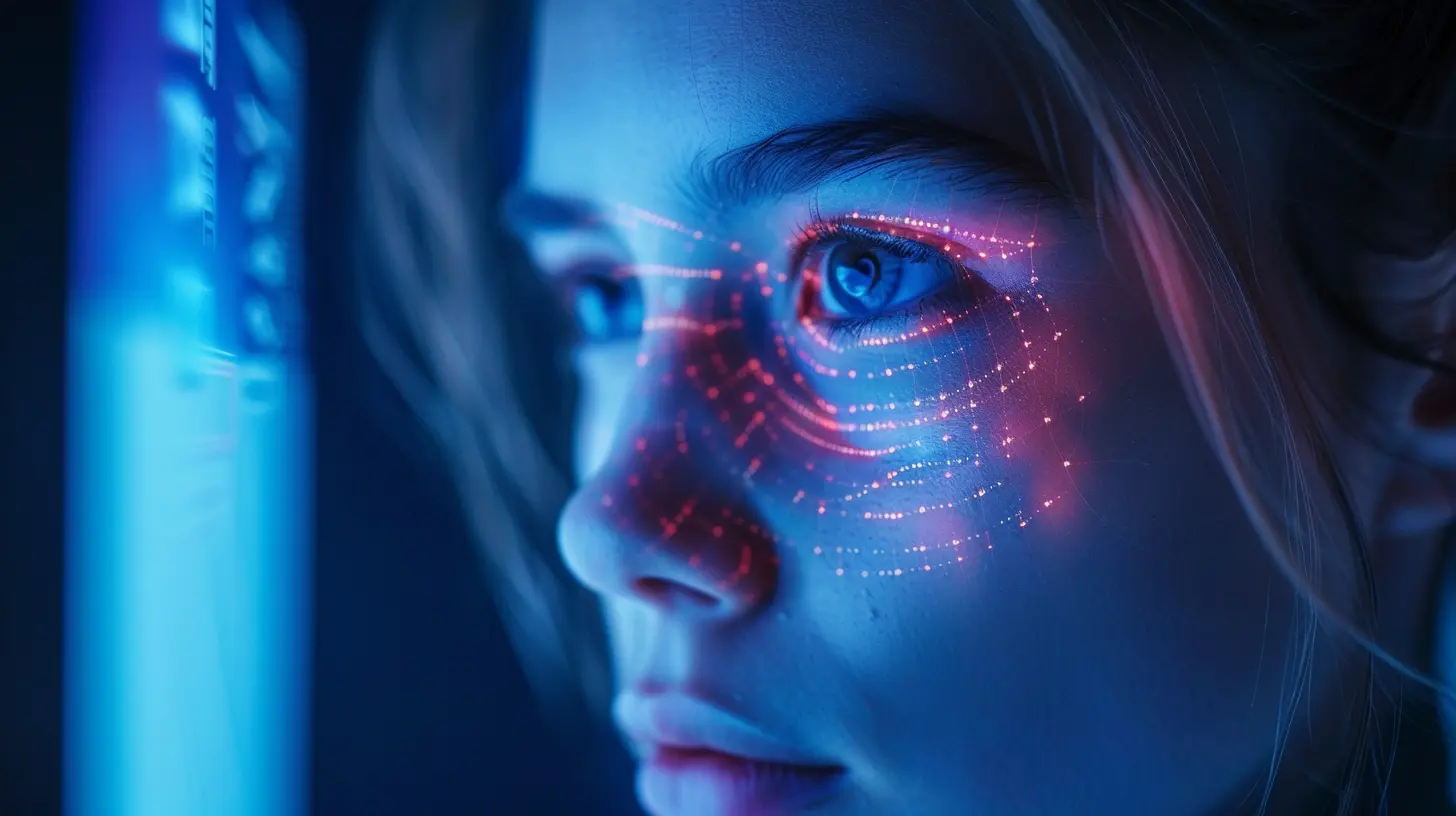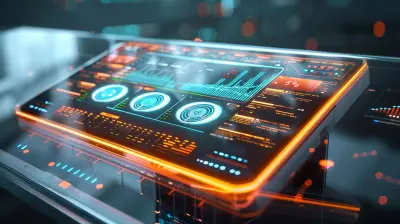The Future of Biometric Security in Data Protection
10 May 2025
In today's interconnected digital landscape, protecting personal and sensitive data is more important than ever. With cyberattacks and data breaches becoming increasingly sophisticated, traditional methods of securing information, like passwords and PINs, are quickly proving to be insufficient. Enter biometric security—your unique physical traits acting as the key to unlock the digital realm.
But what does the future hold for biometric security? Will it become the standard for data protection, or will it face challenges that could limit its widespread adoption? Let’s dive into the world of biometric security, explore its potential, and discuss the hurdles it needs to overcome.

What is Biometric Security?
Before we get ahead of ourselves, let’s first break down what biometric security actually is. In a nutshell, biometrics refers to the measurement and statistical analysis of people's unique physical and behavioral characteristics. This includes things like your fingerprints, facial structure, voice patterns, iris scans, and even the way you walk!Biometric security systems leverage these unique traits to verify your identity. Think of it as nature’s very own password. Instead of typing in a string of characters that anyone can potentially guess or steal, you use something that is inherently you. And that’s the beauty of biometrics—it’s incredibly hard to fake or replicate.

Why Are Traditional Security Methods Failing?
Let’s face it, passwords are a headache. How many times have you forgotten your password only to reset it to something equally forgettable? And even when you come up with a “strong” password, there’s still a chance it could be hacked, phished, or leaked in a data breach.In fact, according to a study by Verizon, over 80% of data breaches are caused by weak or stolen passwords. That’s a staggering number! You might think two-factor authentication (2FA) offers extra protection, but while it does add a layer of security, it still isn’t foolproof. Hackers are getting better at intercepting SMS codes and phishing for those little one-time passcodes.
This is where biometrics comes in. Since biometric data is unique to every individual, it eliminates many of the weaknesses associated with traditional security measures. You can’t exactly "forget" your fingerprint or "misplace" your face, can you?

The Evolution of Biometric Security
Biometric security has come a long way from the days of grainy fingerprint scans. Thanks to advancements in technology, today’s biometrics are faster, more accurate, and easier to use. Most of us already interact with biometric security daily without even thinking about it.Take your smartphone, for example. Whether you’re using Touch ID, Face ID, or an iris scanner, you’re already relying on biometrics to keep your data safe. And it’s not just phones; biometric security is gradually being integrated into everything from laptops to ATMs.
But what’s next for biometric security? How will it evolve in the future?
Multi-Modal Biometrics
Right now, most biometric systems rely on a single method—such as a fingerprint or facial recognition—to verify identity. While this works well in many cases, relying on just one form of biometrics can still be vulnerable to spoofing or errors.Enter multi-modal biometrics. This approach combines multiple biometric identifiers to create a much more secure system. For example, instead of just scanning your fingerprint, a multi-modal system might also analyze your voice and your face. This layered approach significantly reduces the chances of someone spoofing or bypassing the system.
Plus, multi-modal biometrics can offer more flexibility. If for some reason your fingerprint doesn’t scan properly (maybe your finger is wet or dirty), the system can fall back on another method like facial recognition or iris scanning.
Behavioral Biometrics
Another exciting development in the world of biometrics is behavioral biometrics. This system doesn’t just rely on your physical characteristics—like your fingerprint or face—but also analyzes the way you interact with devices.For instance, the way you type, how you swipe across a screen, and even how you hold your phone can be used as identifiers. These subtle, often unconscious behaviors are unique to each individual, making them an extremely secure form of biometric verification.
One of the major advantages of behavioral biometrics is that it works passively in the background. You don’t need to stop and scan your finger or look into a camera. The system is constantly monitoring your behaviors and can detect if someone else is impersonating you.

The Role of AI and Machine Learning in Biometric Security
Artificial intelligence (AI) and machine learning are revolutionizing the way biometric systems operate. These technologies can improve the accuracy of biometric identification and help systems adapt to changes over time.For example, your appearance might change over the years—think aging, growing a beard, or wearing glasses. Traditional biometric systems might struggle to recognize you when these changes occur. But with AI and machine learning, biometric systems can learn and adapt, ensuring that they continue to work effectively even as your physical traits evolve.
Machine learning can also help detect attempts to spoof or fake biometric data. AI algorithms can spot subtle differences between a real face and a high-quality photo or video, making it much harder for hackers to trick the system.
The Privacy Concerns Around Biometrics
Alright, let’s address the elephant in the room—privacy. While biometric security offers many benefits, it also raises some serious concerns about how our biometric data is collected, stored, and used.Biometric data is incredibly personal. Unlike a password, you can’t exactly change your fingerprint or face if it gets compromised. This makes it all the more important to ensure that biometric data is stored securely and that there are strict regulations in place to prevent misuse.
Another concern is surveillance. As biometric systems become more widespread, there’s the potential for governments or corporations to use this technology to track and monitor individuals without their consent. Imagine walking down the street, and every camera you pass is scanning your face and logging your every move. It’s a scary thought, right?
To address these concerns, we need strong privacy laws and regulations that govern how biometric data is collected, used, and shared. In many parts of the world, these laws are still playing catch-up with the rapid pace of technological advancement.
The Future of Biometric Security: What's Next?
So, what’s in store for the future of biometric security? Spoiler alert: it's going to get even more integrated into our daily lives. As the technology becomes more sophisticated and accessible, we’ll likely see biometrics being used in even more areas, from healthcare to banking to public transportation.Biometric Payments
Imagine paying for your groceries with just a smile—or a fingerprint. Biometric payments are already being tested in some parts of the world, and they could soon become the norm. Instead of swiping a card or tapping your phone, you’ll simply verify your identity using biometrics.This not only makes transactions more secure but also faster and more convenient. No more fumbling for your wallet or worrying about your card getting stolen.
Biometric Security in Smart Homes
We’re also likely to see biometrics playing a bigger role in smart homes. Picture this: You walk up to your front door, and it automatically unlocks after recognizing your face. Once inside, your smart home system adjusts the temperature, lighting, and music based on your preferences.Biometric security can add a layer of personalization and convenience to smart homes, making them even smarter and more intuitive.
Biometric Wearables
As wearables like smartwatches and fitness trackers become more advanced, they may start incorporating biometric security features. For example, your smartwatch could use your heartbeat or skin texture to verify your identity. This could be used to unlock devices or even make secure payments while you’re on the go.The Challenges Biometrics Still Face
While the future of biometric security is undoubtedly exciting, there are still some hurdles that need to be overcome.Accuracy and Reliability
No system is perfect, and biometric security is no exception. Factors like lighting, the angle of your face, or even a smudge on a fingerprint scanner can affect the accuracy of biometric systems. While technology is improving, there’s still a need for more reliable and consistent systems.Cost and Accessibility
Biometric technology can be expensive to implement, especially when it comes to advanced systems like multi-modal or behavioral biometrics. This could limit its adoption, particularly in developing countries or smaller businesses that may not have the resources to invest in these systems.Ethical Concerns
We touched on privacy earlier, but there are also broader ethical concerns surrounding the use of biometrics. For instance, should employers be allowed to use biometrics to monitor their employees? And how do we ensure that biometric data isn’t used to discriminate against certain groups of people?These are complex questions that will need to be addressed as biometric security becomes more widespread.
Conclusion: A Biometric-Driven Future
Biometric security is poised to play a major role in the future of data protection. It offers a level of convenience, accuracy, and security that traditional methods simply can’t match. From multi-modal systems to the integration of AI and machine learning, the potential for biometric security is immense.However, like any new technology, it’s not without its challenges. Privacy concerns, ethical issues, and the need for more reliable systems are all hurdles that must be addressed as we move towards a biometric-driven future.
But one thing’s for sure: the days of passwords and PINs may soon be a thing of the past. And honestly, I think most of us are ready to say goodbye.
all images in this post were generated using AI tools
Category:
Data SecurityAuthor:

Reese McQuillan
Discussion
rate this article
6 comments
Melody Reyes
Great article on biometric security! It’s fascinating to see how these technologies evolve and enhance data protection. I’m particularly interested in the balance between convenience and privacy. Looking forward to future developments in this field!
May 17, 2025 at 2:52 AM

Reese McQuillan
Thank you for your insightful comment! I'm glad you found the article engaging. The balance between convenience and privacy is indeed crucial as biometric technologies evolve. Stay tuned for more updates!
Patience Cook
Exciting times ahead for biometric security! Embracing innovation can keep our data safe and sound—let's welcome the future together!
May 15, 2025 at 11:09 AM

Reese McQuillan
Thank you! Exciting advancements in biometric security indeed promise to enhance data protection and security for all. Let's embrace this innovation together!
Theo Patterson
This article insightfully highlights the evolving role of biometric security in data protection. The balance between convenience and privacy is crucial as technology advances. I appreciate the exploration of potential challenges and ethical considerations that come with implementing biometric solutions. Looking forward to future developments in this field!
May 14, 2025 at 7:23 PM

Reese McQuillan
Thank you for your thoughtful feedback! I'm glad you found the article insightful and relevant to the ongoing conversation about balancing convenience and privacy in biometric security. Exciting developments lie ahead!
Fatima Holland
Unlocking security: Biometrics will redefine data protection and empower our digital future!
May 13, 2025 at 12:10 PM

Reese McQuillan
Thank you for your insight! Indeed, biometrics holds great potential to enhance data security while making our digital experiences more seamless and trustworthy.
Romina Roberson
Great insights on the evolving role of biometric security in data protection! It's fascinating to consider how these technologies will enhance privacy and security in our digital landscape.
May 13, 2025 at 5:02 AM

Reese McQuillan
Thank you! I'm glad you found the insights valuable. The future of biometric security is indeed exciting and pivotal for enhancing our privacy and security!
Echo Carter
Embracing biometric security is not just about safeguarding data—it's about empowering a future where privacy and innovation go hand in hand. Let's innovate together!
May 11, 2025 at 3:46 AM

Reese McQuillan
Thank you for your insightful comment! I completely agree—balancing privacy and innovation is key to advancing biometric security. Together, we can shape a safer digital future!
MORE POSTS

How Smart Glasses are Evolving for Everyday Use

Emerging Trends in Smart Displays and Their Impact on Daily Life

The Evolution of Gaming Monitors: From 60Hz to 240Hz and Beyond

The Role of Hyperscale Data Centers in the Cloud Revolution

The Best Laptops for Stock Trading: Speed, Connectivity, and More